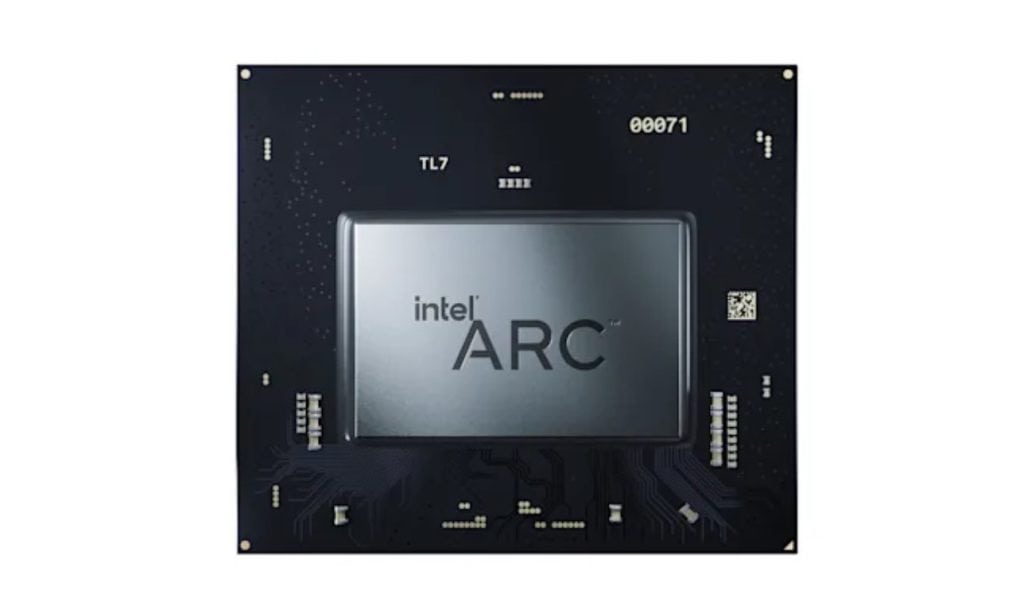
Way back in 2018 Intel announced plans to develop its own line of discrete GPUs back designed to compete with rival cards from AMD and NVIDIA. And despite several delays including missing its original 2020 launch window, this spring the first batch of Intel’s new Arc graphics cards are finally ready for use in retail devices, starting with Samsung’s Galaxy Book 2 Pro laptops.
As a quick recap, while Intel’s Arc line will eventually cover both laptops and desktops, the first batch of A-series GPUs are lower-power cards intended mainly for ultraportables and thin-and-light notebooks. The company’s graphics cards will use a naming scheme similar to its CPUs to help differentiate between various performance tiers, beginning with the new Arc A350M and A370M, before moving on to the more powerful Arc 5 and Arc 7 cards which are due out sometime later this summer.
Across the entire family of Arc GPUs, Intel’s graphics architecture is based on four main pillars: the company’s XE cores, XE Media Engine, XE Display Engine, and the XE Graphics Pipeline. All Arc cards will also have the same basic feature set including support for DirectX 12 Ultimate, ray tracing, XE Super Sampling, AV1 hardware acceleration and more.
The Arc’s XE cores are based on Intel’s XE HPG (High Performance Graphics) microarchitecture, with each core featuring 16 256-bit Vector Engines. 16 1,024-bit Matrix Engines and 192KB of shared memory. The XE Media Engine is designed to support popular video apps with hardware encoding at up to 8K 10-bit HDR and hardware acceleration for a number of popular standards (VP9, AVC, HEVC, AV1). Meanwhile, the XE Display Engine was built to handle video output for up to two 8K displays at 60Hz simultaneously, four 4K displays running at 120Hz, or a single 1440p screen at 360Hz.
As for the two new cards themselves, both the A350M and A370M are targeting 1080p gaming at 60fps to 90fps across a range of popular games. The A350M is designed to draw between 25 and 35 watts of power and will sport six XE cores, six ray tracing units, a graphics clock of 1,150 MHz (which Intel says is a conservative estimate of the card’s typical clock speed) and 4GB of GDDR6 vRAM. Alternatively, the A370M is designed for slightly larger laptops with a power draw of between 35 and 50 watts, eight XE cores, 8 ray tracing units, a graphics clock of 1,550 MHz, and the same 4GB of vRAM. And as you can see in the image above, the upcoming Arc 5 and Arc 7 cards will be significantly more powerful. But again, they won’t be out until sometime in early summer.
Also, alongside its new GPUs, Intel created a software suite called Arc Control similar to NVIDIA’s GeForce Experience and AMD’s Radeon Software, designed to allow users to more easily monitor performance, install drivers and updates, record game highlights and even connect to live streaming apps like Xsplit. And thanks to a UI that uses a streamlined overlay, Intel’s Arc Control should be easy to access in the middle of a battle.
Intel even says it’s working more with developers to provide faster and more responsive driver support for new titles, with featured games on the Arc cards including titles such as Elden Ring, Ghostwire: Tokyo, Dolmen and a whole lot more. And as one of the largest chip makers in the world, Intel also created its Deep Link tech which is designed to give its Arc cards an additional performance boost when working in tandem with Intel’s onboard integrated graphics.
So while we’re only getting two new Arc cards right now (and relatively low-power ones at that), today marks an important moment as Intel finally becomes the true third horse in the discrete graphics space. The first retail device to feature one of Intel’s A-series cards is Samsung’s Galaxy Book 2 Pro, which goes on sale next month. However, Intel promises that there will be a slew of even more laptops featuring Arc GPUs coming soon from big names including Acer, Asus, Dell, HP, MSI, Lenovo and others.